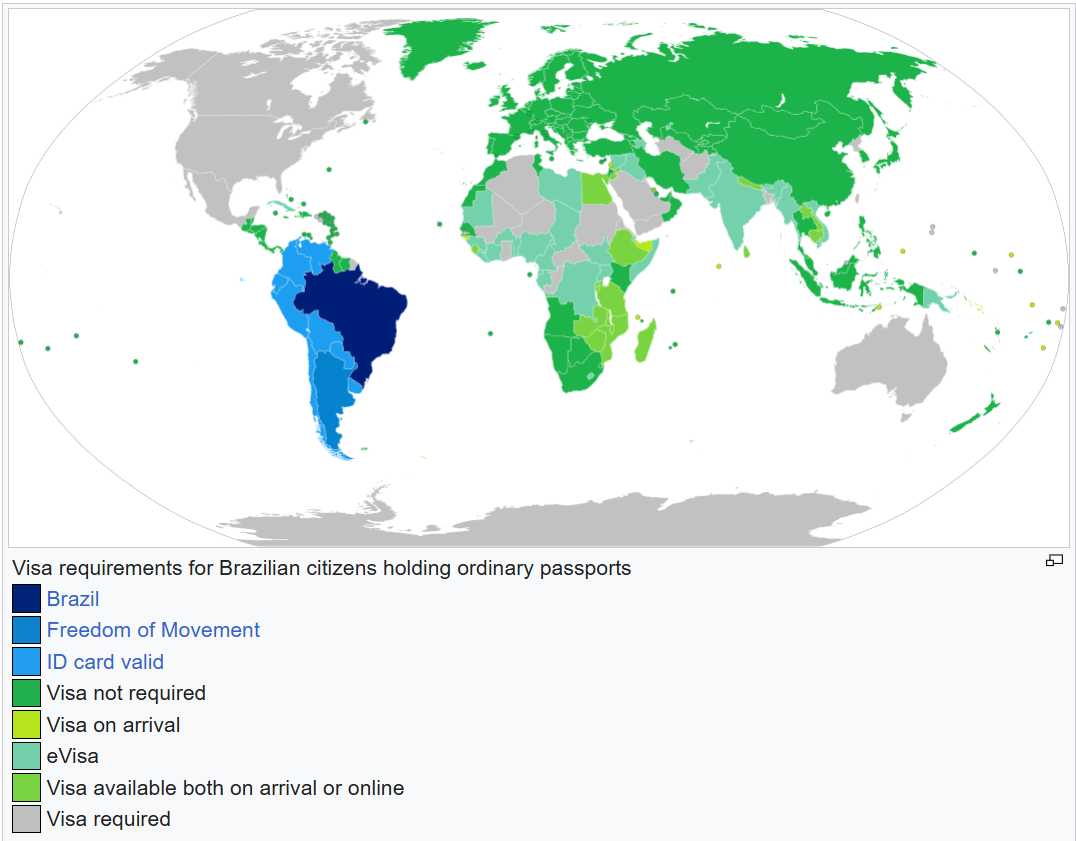Home > South America > Brazil > How To Get Residency in Brazil: A Comprehensive Guide
How To Get Residency in Brazil: A Comprehensive Guide
Capital: Brasília
Population: 212,583,750 (2024, 7th)
Ethic Group: 45.3% Mixed,43.5% White, 10.2% Black
Area: 8,515,767 km2 (5th)
Offical Language: Portuguese
Currency: Real (R$) (as of Aug 1st, 2025, 1 Brazil Real = 0.18 USD)
GDP per Captial (PPP): $23,238 (2025 estimated, 78th)
Human Development Index: 0.786 (2023, 84th)

Country Profile:
Located in eastern South America, Brazil is the largest country in Latin America and the fifth-largest in the world. It’s a country rich in natural resources, home to most of the Amazon rainforest, the largest tropical rainforest on Earth.
Brazil is also the ninth-largest economy globally and the largest in South America, with strong agricultural, mining, manufacturing, and service sectors. It’s a leading worldwide producer of coffee, sugar, and orange juice and a major exporter of meat and soybeans.
Music, samba, soccer, and its cuisine are all hallmarks of Brazilian culture.
Visa and Immigration System:
The simplest and quickest way to move to Brazil is through its VIPER (Permanent Residency Investor Visa) program. With this program, you can choose to operate a business in Brazil or purchase real estate to obtain permanent residency.
If you start a company, the minimum investment requirement is approximately $26,700. If you opt for real estate, you need to purchase local property worth at least $125,000.
The advantage of VIPER is that there is no minimum residency requirement; you only need to enter Brazil once every two years to maintain your permanent residency.
In addition to the investment residency, Brazil offers various visa options for entering the country, including the VIVIS tourist visa, VITEM I research and education visa, VITEM IV student visa, VITEM V work visa, VITEM VI overseas Brazilian visa, VITEM VII religious visa, VITEM XIV digital nomad visa, and retirement visa.
Among these, there are three common ways to move to Brazil:
1. Work Visa: For this visa, you need to be employed by a Brazilian company, which will apply for a work permit for you to work in Brazil.
The Brazilian work visa is generally valid for two years, after which you can apply for permanent residency.

2. Retirement Visa: To qualify for a Brazilian retirement visa, applicants must be retired, with a preference for men over 65 and women over 60. To apply, you must also have a stable retirement income and provide proof of a minimum monthly pension of $2,000.
Retirement visa holders can apply for permanent residency after legally residing in Brazil for two years.
3. Digital Nomad Visa: The Brazilian digital nomad visa requires you to be a remote worker with a stable monthly income of $1,500.
Compared to similar programs in the region, a key advantage of the Brazilian digital nomad visa is that if your monthly income does not meet the requirement, you can still qualify by having a savings deposit of $18,000.
However, this is also a non-immigrant visa, allowing the holder to reside in Brazil for a maximum of two years. You cannot use the digital nomad visa to apply for permanent residency or citizenship.
Permanent Residency & Citizenship:
Foreigners holding an immigrant visa can apply for permanent residency in Brazil after legally residing in the country for 2 years and meeting other requirements.
Although there is no explicit minimum residency duration requirement, it is recommended that you stay in Brazil for at least 183 days each year if you wish to apply for permanent residency.
Brazilian permanent residents who have legally lived in the country for 4 years and meet the Portuguese language proficiency standards can apply for citizenship.
Passport Utility:
Brazil recognizes dual citizenship, with passport ranking 16th globally. Holders are granted free entry (visa-free or visa-on-arrival) to 170 countries and regions worldwide. (As of Aug 1st, 2025)

Brazil is part of the Southern Common Market(MERCOSUR).As shown in the figure below, citizens of the member countries of this agreement can freely work and live in any other member country. After two years, if one can provide proof of financial means to support oneself and family, they can directly obtain a permanent residence visa in the country of residence. Having Brazilian citizenship is very convenient for living in South America.

Useful Links:
Brazil Ministry Of External Affairs:https://www.gov.br/mre/pt-br/assuntos/portal-consular/
Brazil Digital Nomad Visa: https://www.gov.br/mre/pt-br/embaixada-helsinque/consular-services/digital-nomad-visa-vitem-xiv
Brazil Retirement Visa: https://www.gov.br/mre/pt-br/embaixada-abu-dhabi/abu-dhabi-arquivos/english/consular-services/visa/types-of-visa/visa-for-living-in-brazil-after-retirement
Home > South America > Brazil > How To Get Residency in Brazil: A Comprehensive Guide